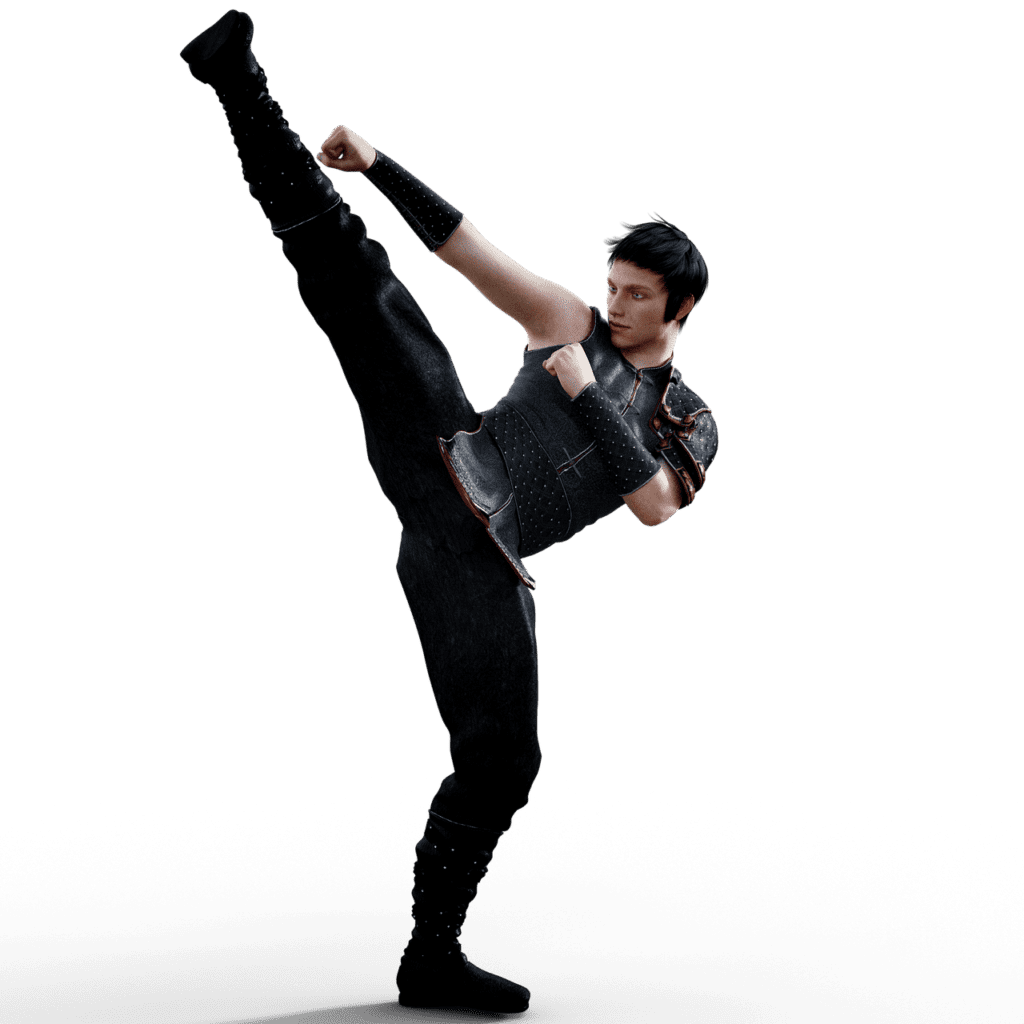Are you ready to take your fighting skills to the next level? Look no further! In this article, you will discover a collection of effective strategies and techniques to master the art of fighting in the clinch. Whether you’re a seasoned fighter or just starting out, these tactics will equip you with the knowledge and skills you need to dominate your opponent in close-quarters combat. Get ready to enhance your fighting game and gain the upper hand in any clinch situation. Let’s get started!

Positioning in the Clinch
Maintaining a strong base is crucial in the clinch. By having a solid foundation, you can effectively resist your opponent’s attempts to destabilize you. You should bend your knees slightly, with your feet shoulder-width apart to ensure stability. Keep your hips squared and avoid leaning forward or backward, as this can throw off your balance. By maintaining a strong base, you’ll be able to launch powerful strikes and defend against your opponent’s attacks with greater ease.
Getting your head in the right position is another vital aspect of positioning in the clinch. You want to ensure that your head is not easily exposed to strikes. Tuck your chin towards your chest, protecting your jaw and throat. This position will help reduce the risk of getting knocked out and enable you to stay more focused on your opponent’s movements.
Controlling your opponent’s arms is a key strategy in the clinch to limit their offensive capabilities. Employ techniques such as wrist control to prevent your opponent from delivering powerful strikes or securing a dominant position. By controlling their arms, you can manipulate their movements and set up your own strikes or takedowns.
Striking Techniques
Utilizing short-range strikes is highly effective in the clinch. These strikes can be quick and powerful, allowing you to take advantage of the close proximity to your opponent. Techniques such as short hooks, uppercuts, and quick jabs can be devastating when delivered with proper technique and precision. These strikes can quickly stun your opponent and create openings for other attacks or transitions.
Implementing knee strikes in the clinch can cause immense damage to your opponent. Knees are powerful and highly versatile weapons, enabling you to target vulnerable areas such as the stomach, ribs, or head. By using your hips and core strength, thrust your knee towards your opponent, making sure to maintain a strong base and balance throughout the strike. Practice your knee strikes to increase their effectiveness and accuracy.
Employing elbow strikes can be highly effective in close-quarters combat. Elbows are incredibly sharp and can cause significant damage when delivered with precision. Practice different elbow strike techniques, such as horizontal elbows, spinning elbows, and upward elbows. These strikes can be targeted at various vulnerable areas such as the temple, jaw, or collarbone, giving you an upper hand in the clinch.
Defensive Movements
Blocking strikes effectively is crucial in the clinch to minimize the damage inflicted by your opponent. Use techniques such as forearm blocks, parries, and cover-ups to protect yourself from punches, elbows, or knees. It’s important to react quickly and anticipate your opponent’s strikes to effectively block them. By mastering defensive movements, you can create openings for counters and maintain your advantage in the clinch.
Utilizing head movement to evade attacks is an essential defensive skill to develop in the clinch. By bobbing, weaving, and ducking, you can avoid incoming strikes and frustrate your opponent’s offensive efforts. Practice drills that focus on head movement, such as slipping punches or rolling under hooks. These movements will not only help you avoid damage but also allow you to counterattack effectively.
Clinching to nullify strikes is another defensive technique that can help you control your opponent’s offensive output. Clinch up with your opponent, using your arms to wrap around their neck or under their armpits. This close proximity reduces their ability to generate power in their strikes, limiting the damage they can inflict. Clinching also allows you to control the pace of the fight and potentially transition to more advantageous positions.
Offensive Movements
Initiating strikes and maintaining control is crucial in the clinch. Be the first to launch attacks, surprising your opponent and gaining the upper hand. This can be achieved through short-range strikes, mixing up punches, elbows, and knees to keep your opponent off balance. By keeping the pressure on and staying in control, you can dominate the clinch and dictate the flow of the fight.
Utilizing underhooks to control the opponent is a highly effective offensive technique in the clinch. By securing underhooks, you gain control over your opponent’s upper body, limiting their ability to strike or defend. Use your underhooks to manipulate their posture, disrupt their balance, and set up takedowns or strikes. Practice maintaining underhooks and utilizing them to your advantage.
Implementing throw and takedown techniques is crucial for transitioning from striking to grappling in the clinch. Techniques such as hip throws, foot sweeps, and trips can catch your opponent off guard and earn you valuable points or a dominant position. Practice these techniques with a training partner, ensuring proper technique and timing. By being proficient in throws and takedowns, you can seamlessly transition between striking and grappling in the clinch.

Exploiting Weaknesses
Identifying vulnerabilities in your opponent’s clinch is key to capitalizing on their weaknesses. Observe their footwork, hand placement, and body positioning to find areas where they are vulnerable to strikes or takedowns. Exploit these weaknesses by targeting specific areas or manipulating their movements to create openings for your attacks. By understanding and exploiting your opponent’s weaknesses, you can gain a significant advantage in the clinch.
Targeting pressure points for maximum impact is a strategic way to maximize the effectiveness of your strikes in the clinch. Certain areas of the body, such as the temple, solar plexus, or liver, are more vulnerable and susceptible to damage. By accurately targeting these pressure points with focused strikes, you can significantly weaken your opponent and decrease their ability to defend or launch counterattacks.
Exploiting gaps in your opponent’s defense requires keen observation and quick reflexes. Analyze their defensive movements and anticipate when they leave openings. These gaps could be momentary lapses in guard or brief moments of off-balance footwork. By timing your strikes or takedowns to exploit these gaps, you can catch your opponent off guard and gain the upper hand in the clinch.
Footwork and Angles
Changing angles to gain an advantage is a crucial aspect of footwork in the clinch. Move laterally, stepping to the side to create different angles of attack. By doing so, you can attack from unexpected directions, making it harder for your opponent to defend against your strikes. Practice footwork drills that focus on agility and lateral movement to enhance your ability to change angles effectively in the clinch.
Maintaining balance through proper footwork is essential in the clinch. Keep a solid base as you move, distributing your weight evenly between both legs. Avoid crossing your feet or becoming too narrow in your stance, as this can make you vulnerable to trips or takedowns. By maintaining balance, you’ll be able to defend against strikes and initiate your own attacks with greater control and power.
Creating space to execute techniques is a key skill in the clinch. When your opponent is pressuring you or attempting to close the distance, use footwork to create distance and reset the clinch. By stepping back or circling away, you can create opportunities for counterattacks or repositioning. Practicing creating space in combination with offensive maneuvers will enable you to execute techniques more effectively.

Utilizing Wrestling Techniques
Implementing takedowns from the clinch is an effective way to control the fight and score points. Techniques such as the double-leg takedown and the hip toss can be executed from the clinch position. By using your wrestling skills, you can bring your opponent to the ground, gaining a dominant position or potentially finishing the fight. Practice takedowns from the clinch, focusing on technique, timing, and control.
Controlling body positioning using wrestling techniques is crucial in the clinch. Utilize techniques such as the collar tie, over-under position, or body lock to establish control over your opponent’s movements and limit their offensive capabilities. By mastering these wrestling techniques, you can neutralize your opponent’s attacks and create opportunities for your own strikes or takedowns.
Escaping from clinch positions is an essential skill to have in case you find yourself in a disadvantageous position. Practice techniques such as pummeling, hip escapes, or push-offs to create space and break free from the clinch. By being able to escape, you can alleviate the pressure from your opponent and potentially reset the fight to a more advantageous position.
Strategies for Different Body Types
Leveraging height and reach advantages can give you an edge in the clinch. If you are taller or have a longer reach, utilize your jab and knee strikes to keep your opponent at a distance. Focus on maintaining a strong base and using your reach advantage to strike effectively while avoiding getting too close to your opponent’s strikes or takedowns.
Capitalizing on strength and power is crucial if you have a more muscular or powerful build. Utilize strikes such as hooks or uppercuts to capitalize on your strength and generate significant power. Employ underhooks to control your opponent’s body and neutralize their offensive capabilities. By using your strength advantage effectively, you can overpower your opponent in the clinch.
Using speed and agility to overcome size disadvantages is key if you are smaller or have less physical power than your opponent. Focus on quick strikes and maintaining constant movement to make it difficult for your opponent to land powerful strikes or secure dominant positions. Utilize footwork and angles to create openings for strikes or counterattacks. By relying on speed and agility, you can frustrate your opponent and find opportunities to neutralize their advantages.
Transitioning from the Clinch
Smoothly transitioning to striking or grappling is essential to keep your opponent guessing and maintain control in the fight. By seamlessly transitioning between techniques, you can catch your opponent off guard and gain the advantage. Practice drills that focus on flow between striking and grappling, ensuring that your transitions are fluid and efficient. By mastering transitions, you can keep your opponent on the defensive and respond effectively to their tactics.
Creating openings for effective transitions requires a strategic approach. Use strikes or feints to distract your opponent and create opportunities to maneuver into positions favorable for grappling or striking. By timing your strikes or movements precisely, you can create openings and catch your opponent off guard, paving the way for seamless transitions.
Timing transitions to catch opponents off guard is a crucial aspect of successful clinch fighting. By observing your opponent’s movements and anticipating their reactions, you can time your transitions to take advantage of their vulnerabilities. This requires quick decision-making and sharp reflexes. With practice and experience, you can become adept at timing transitions and catching your opponents off guard.
Clinch Training Drills
Practicing clinch position control is essential for developing proficiency in the clinch. Drill techniques such as collar ties, double underhooks, and body locks to gain control over your opponent’s movements and restrict their offensive capabilities. By mastering these positions, you can dictate the pace and flow of the fight.
Drills for developing effective strikes in the clinch are crucial for honing your offensive skills. Practice short-range strikes such as hooks, uppercuts, and knees with a training partner. Focus on precision, speed, and generating power from close quarters. By drilling these techniques, you will become more proficient in delivering effective strikes in the clinch.
Simulating real fight scenarios during training is crucial to prepare yourself for the unpredictable nature of actual fights. Incorporate live sparring sessions that involve clinch fighting, allowing you to test your skills against resisting opponents. This will help you identify areas that need improvement and develop effective strategies for different situations. By simulating real fight scenarios, you’ll be better prepared to handle the intensity and pressure of a live fight.
In conclusion, fighting in the clinch requires a combination of technique, strategy, and adaptability. By mastering the various aspects of positioning, striking, defense, and transitions, you can become a formidable clinch fighter. Remember to always train with proper technique, respect your training partners, and prioritize safety. With dedication, practice, and a friendly yet competitive mindset, you can excel in the art of fighting in the clinch.

